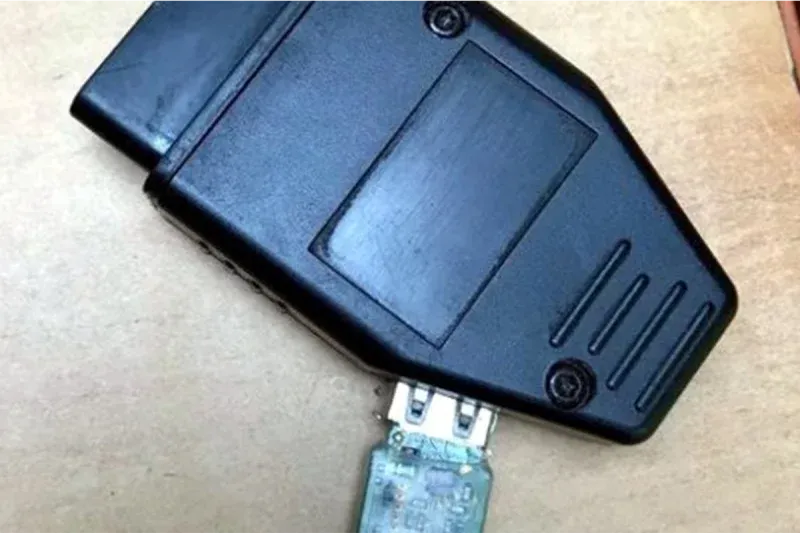London July 17, 2019 – During a roadside check in Lódz in Poland, a new way of tachograph manipulation was discovered by accident. This new method works with a device that is connected to the OBDII diagnosis socket of the lorry.
The discovery of the fraud took place when the lorry was stopped during roadside check for a routine inspection of the tachograph. Remarkably, the tachograph indicated that previously to the moment the vehicle was stopped the driver had been standing still for 7 hours and therefore no driving activities had been registered. This made the Polish police suspect that the tachograph had been tampered with.
Subsequently, the vehicle was further inspected in a tachograph workshop. First, it was investigated whether a magnet or so-called pulser was installed. These are the well-known tools for tachograph manipulation. Neither of these were found. In the meantime this situation was so dubious that several inspectors and experts were called in to the investigation of the lorry.
Surprisingly, a device was found with a small USB drive attached to it that was designed to be connected to the OBDII diagnostic socket of the lorry. This was remarkable because the OBDII is generally used to read diagnostic data from the vehicle and also to analyse and clear error messages by a workshop.
The inspectors then connected this device and performed test drives with it. These tests showed that indicator lights in the dashboard constantly switched on and off and the tachograph only registered rest time while driving. As soon as the device was disconnected, the tachograph functioned and regained normal operation: a new exceptionally effective method of tachograph manipulation was exposed.
The FleetGO Expert on Tachograph Manipulation
“The lights in the dashboard that turn on and off make it plausible that this device overwrites the vehicle network via the OBDII connection and can therefore also access the tachograph that is part of the network
Apart from the fact that this manipulation is a serious violation of the law, this method poses a great danger to European road safety. After all, it is unclear what kind of orders this device sends over the vehicle network and thus also disrupts other vehicle devices. In addition, it is more difficult for inspectors to detect manipulation because this device Plug & amp; Play and the driver can quickly disconnect this device”, says Joeri Westendorp VP Business Development & FleetGO Partner.
According to the press release from the police in Lódz, the total fine in Poland can go up to PLN 19,000 (around 4,500 euros) but given the great danger this fraud brings to road safety, it is doubtful whether a fine is sufficient.



